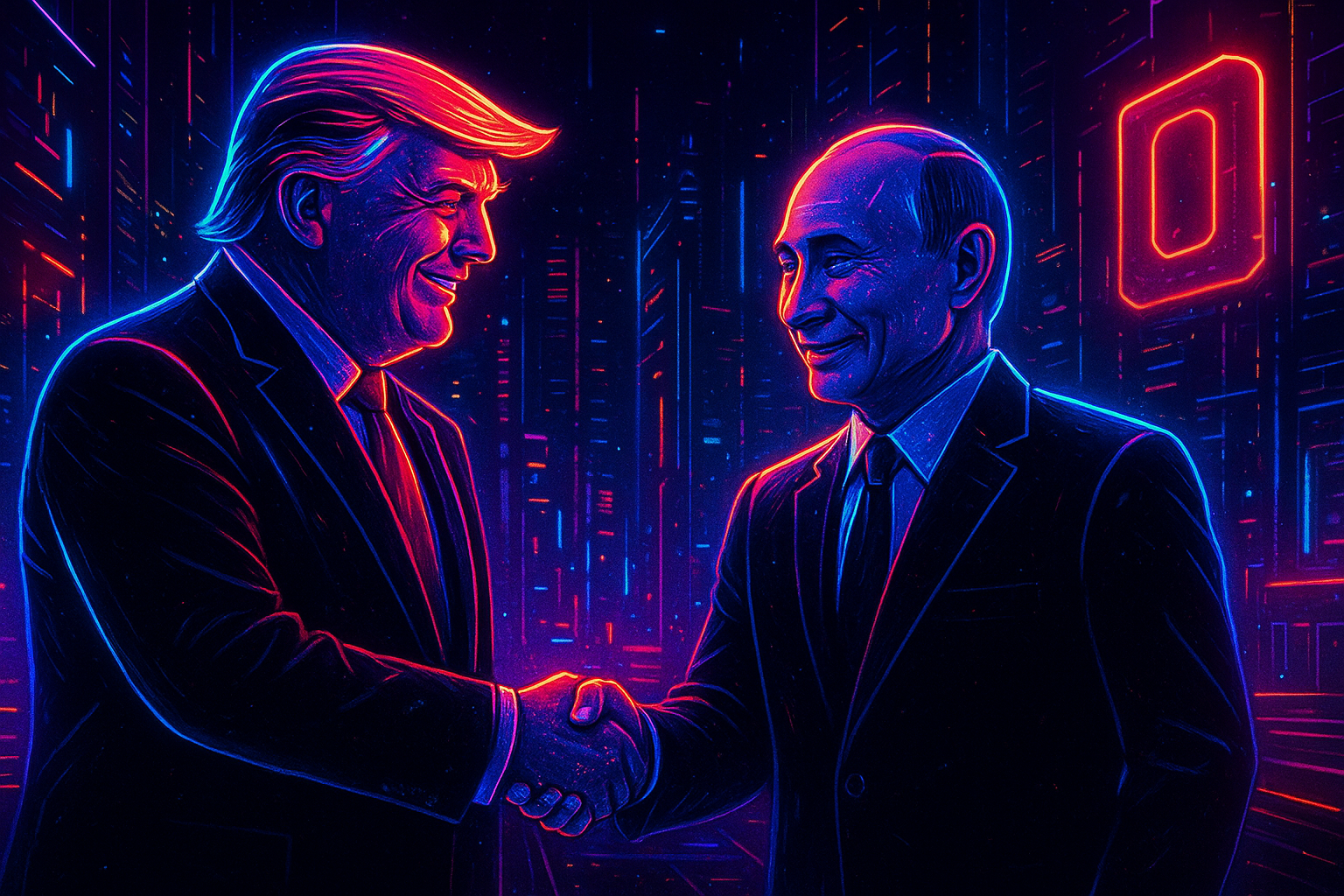The Trump-Putin Summit: A Pivotal Moment in the Ukraine Conflict and Global Geopolitics
In the crisp chill of Anchorage, Alaska, on August 15, 2025, U.S. President Donald Trump and Russian President Vladimir Putin convened for a high-stakes summit that has sent ripples through international relations.

I’m Karl Bullock, the voice behind That Smoke Pit Veteran - a fierce, independent platform for Active Military, Veterans, and anyone who values unfiltered truth. We dive deep into U.S. Military current events, serving up raw, no-nonsense takes with the grit and heart of those who’ve served. Expect bold, unapologetic perspectives that slice through the noise with authenticity and edge. Free from any U.S. Government, Military, or organizational ties, That Smoke Pit Veteran stays true to its mission: delivering hard-hitting content that’s as real as it gets.
This meeting, shrouded in speculation and diplomatic maneuvering, centered on the ongoing war in Ukraine—a conflict that has dragged on for over three years, claiming countless lives and reshaping alliances. As the world watches, questions abound: What was discussed? What does this mean for the United States, Ukraine, and Russia? And what twists might lie ahead? Drawing from recent reports and analyses, this post breaks down the key developments, potential paths forward, and signals to monitor in the coming weeks.
The Summit: What We Know So Far.
The Alaska summit marked the first face-to-face encounter between Trump and Putin since Trump's return to the White House earlier this year. Held amid heightened tensions, the talks lasted several hours, with both leaders emerging to deliver brief remarks but declining questions from the press. Trump described the meeting as "productive," emphasizing discussions on economic ties and the Ukraine crisis, while Putin hailed an "understanding" on the war, cautioning Europe against derailing nascent progress.
No concrete agreements were announced—no ceasefire, no troop withdrawals, and no lifting of sanctions. Instead, the dialogue reportedly focused on land transfers, security guarantees for Ukraine, and a potential route to peace that aligns more closely with Moscow's preferences. Trump, who had previously pushed for an immediate halt to hostilities, appeared to soften his stance, dropping demands for a swift ceasefire after the talks. Sources indicate Putin pressed for Russia to retain control over occupied territories in exchange for concessions elsewhere, a proposal that could involve Ukraine ceding land for peace.
Adding a personal touch, First Lady Melania Trump penned a letter urging Putin to consider the children affected by the war, which President Trump hand-delivered during the summit. While symbolic, this gesture underscores the human cost of the conflict, even as geopolitical jockeying dominates headlines.
Reactions have been polarized. In Russia, the outcome is viewed as a win, with Moscow feeling it holds the upper hand and no new sanctions imposed. European leaders and Ukraine, however, are scrambling, expressing concerns over Trump's apparent alignment with Putin. Security experts warn of fallout from this shift, potentially weakening NATO's resolve and emboldening Russian aggression.
Paths Forward: Implications for Key Players
- For the United States: Trump's approach signals a pragmatic, business-like pivot in U.S. foreign policy, prioritizing deal-making over prolonged military aid. By engaging Putin directly, Trump aims to broker a resolution that could free up resources for domestic priorities, like border security and economic recovery. However, this risks alienating allies and drawing criticism for appeasing an authoritarian leader. Moving forward, the U.S. may push for "robust security guarantees" for Ukraine, possibly short of full NATO membership, while exploring economic incentives for Russia, such as eased sanctions in exchange for de-escalation. Critics argue this could undermine America's global standing, but supporters see it as a bold step toward ending a draining proxy war.
- For Ukraine: Kyiv faces a precarious road ahead. President Volodymyr Zelenskyy, set to meet Trump at the White House on August 18 alongside European leaders like France's Emmanuel Macron and Finland's Alexander Stubb, has insisted on negotiations starting from current front lines and backed by NATO-like security pledges. Reports suggest Trump relayed Putin's demand for more Ukrainian territory, putting Zelenskyy in a bind: accept territorial losses for peace or risk reduced U.S. support. Ukraine's path may involve EU accession as a partial security net, but without firm U.S. backing, its leverage diminishes. Domestically, this could spark unrest if concessions are seen as capitulation.
- For Russia: Moscow emerges strengthened, with Putin securing concessions without major compromises. The Kremlin's strategy—insisting on retaining occupied regions while framing Ukraine as the obstacle to peace—appears to be paying off. Forward, Russia may concede on some fronts, like withdrawing from select areas, to lock in gains and normalize relations with the West. However, if talks falter, Putin could escalate, testing Trump's red lines. Economically, closer ties with the U.S. could alleviate sanctions pressure, bolstering Russia's war machine.
What to Look Out For: Key Indicators and Risks.
As diplomacy intensifies, keep an eye on these developments:
- The August 18 White House Meeting: This trilateral (or multilateral) gathering with Zelenskyy, Trump, and European heads could yield a framework for talks. Watch for announcements on security guarantees or land swaps—any hint of U.S. pressure on Ukraine to concede territory will be telling.
- Sanctions and Aid Flows: If no new penalties follow the summit, it signals Trump's leniency toward Russia. Conversely, halted U.S. aid to Ukraine could force Kyiv's hand.
- Frontline Movements: Escalations in Ukraine, like intensified Russian offensives, might indicate Putin's dissatisfaction or a ploy to strengthen bargaining positions.
- European Unity: Fractures in NATO or EU responses—such as varying stances from Macron or Stubb—could empower Russia. Protests or shifts in public opinion in Europe may influence outcomes.
- Domestic U.S. Politics: With midterm elections looming, Trump's base may applaud a "deal," but bipartisan backlash could constrain his maneuvers.
My Take.
In the wake of the August 15, 2025, summit in Alaska between President Donald Trump and Russian President Vladimir Putin, the path forward for the U.S., Ukraine, and Russia remains fraught with uncertainty, but it also presents a rare window for diplomacy. Trump's shift from demanding an immediate ceasefire to advocating for a comprehensive peace deal, potentially involving land concessions and security guarantees, underscores the complexity of unwinding a conflict that has ravaged Ukraine for years. While critics decry this as alignment with Putin's demands, I see value in this pragmatic pivot—rushed ceasefires often crumble without addressing root issues like territorial control and NATO aspirations. Careful diplomatic engagement, as demonstrated here, allows for nuanced negotiations that could prevent escalation and foster long-term stability, provided all stakeholders, including Kyiv, are genuinely involved.
That said, supporting such approaches demands vigilance to avoid concessions that embolden aggression or undermine Ukraine's sovereignty. As Trump prepares to host Zelenskyy on August 18, alongside European leaders, the focus should be on robust, enforceable guarantees rather than hasty deals. What to expect? A hybrid outcome where Russia retains some gains in exchange for de-escalation, but only if diplomacy is methodical and inclusive. Look out for signs of European unity fraying or frontline escalations, which could derail progress. Ultimately, in scenarios this intricate, patient diplomacy isn't weakness—it's the smartest path to averting broader catastrophe.
Final Notes.
Optimistically, the summit could catalyze real negotiations, leading to a frozen conflict where Russia holds annexed territories, Ukraine gains security pacts, and the U.S. claims a diplomatic victory. Expect Trump to tout this as fulfilling his promise to end wars quickly, potentially involving economic deals like energy partnerships.
Pessimistically, stalled talks might prolong the war, with Putin dragging his feet while blaming Ukraine, prompting Trump to reduce support and isolate Kyiv. This could embolden other aggressors, like China in Taiwan, and strain transatlantic ties.
What may happen? A hybrid outcome seems likely: partial concessions from Russia (e.g., limited withdrawals) in exchange for neutralized Ukrainian regions and delayed NATO aspirations. If Putin senses weakness, he might push for more, risking escalation. Conversely, unified Western pressure could force compromises, though Trump's deal-focused style may prioritize speed over substance.
In a world weary of endless conflict, the Trump-Putin dialogue offers hope but also peril. As events unfold, the stakes for global stability couldn't be higher. Stay tuned—peace, or its illusion, may be closer than it appears.
👋 Follow Me!
If you enjoy my content, please follow me on Social Media and consider sharing this content with your friends! I hope you have a great day! - Karl Bullock "That Smoke Pit Veteran"
X / Threads / Facebook / Instagram
Enjoyed the content? Help keep That Smoke Pit Veteran alive with a kind donation! Your support means the world.
Views are solely those of That Smoke Pit Veteran, not reflecting the U.S. Government or Defense Department's stance, policies, or endorsements. Content is for informational & entertainment purposes only, not affiliated with or endorsed by any government.

